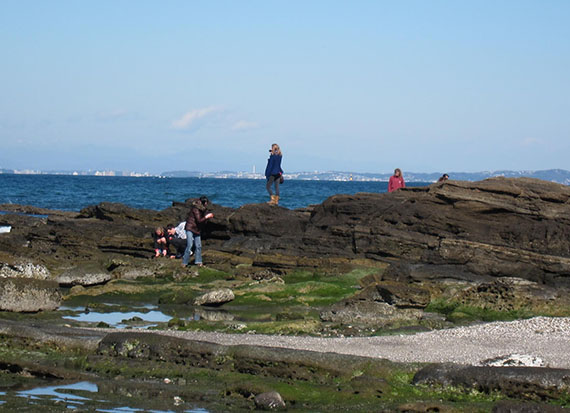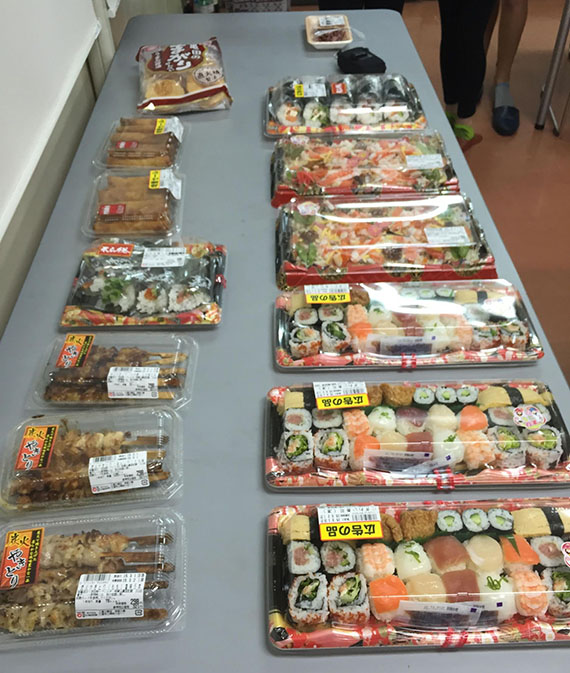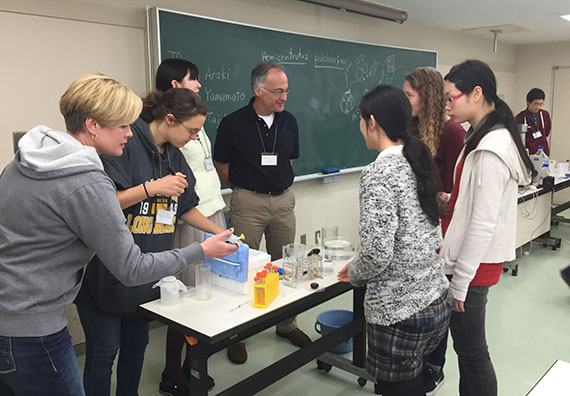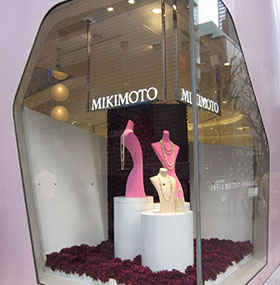E.S. Morse Institute Supports U.S.-Japan Exchange
by Professor Billie J. Swalla, Director of FHL
FHL has established a long-term exchange with Misaki Marine Biological Station (MMBS), facilitated by the E.S. Morse Institute and Mikimoto Pearls. MMBS was established in 1886 by the University of Toyko and is the oldest marine lab in Japan as well as one of the oldest marine labs in the world. Like all marine labs, MMBS was established at a location of high biological diversity, and facilitates marine research and education. In 1910, MMBS was expanded under the supervision of the second Director, Professor Isao Ijima, at the same time as the establishment of the Institute of Fisheries in the College of Agriculture (now the Faculty of Agriculture, University of Tokyo). From 1908 to 1912, MMBS began the cultivation of pearls, applying marine science to a lucrative business. This is how a group of E.S. Morse Scholars traveled to Japan in early March this year to participate in a short course, supported by funds from Mikimoto Pearls.
 Students explore the intertidal tide pools near Misaki Marine Station in Japan. Photo credit: Shawn Luttrell
Students explore the intertidal tide pools near Misaki Marine Station in Japan. Photo credit: Shawn Luttrell
The MMBS short course lasted only a week, so we arrived on Saturday and I met with Professor Hiroyuki Takeda, the President of the Zoological Society for Japan and Professor Shigeru Kuratani, a dear friend from Kobe University. On Sunday, my graduate student Shawn Luttrell and I met up with the other students from the U.S. and Professor Brian Livingston, from California State University Long Beach. We traveled on to MMBS by train, bus, and then finally a short walk in the rain. We were reminded that marine labs are frequently in beautiful, remote places, and getting there can be quite a journey!
 Sunday night the cafeteria was closed at MMBS, so a quick trip to the local grocery store bought enough
Sunday night the cafeteria was closed at MMBS, so a quick trip to the local grocery store bought enough
sushi to feed a crowd! Photo credit: Shawn Luttrell
Sunday night we were on our own for dinner and feasted on sushi from a local grocery store. The course began on Monday, with thirteen Japanese students and seven students from the U.S.A. We worked long days and ate together in a cozy cafeteria with wonderful food. Professor Brian Livingston, Professor Mariko Kondo, and I ran a short course on development and evolution. Professor Akihito Omori, who visited FHL last spring and gave an excellent lecture on crinoid development, was one of the instructors for the other courses. MMBS is known internationally for their work on crinoids, and there are ten species that can be found there. This was my first encounter with living crinoids and they are amazing animals, with a long fossil record. We were able to compare crinoid and sea star larvae from cultures that were being cultivated there. Every morning we had lectures, then moved to the lab to spawn animals, separate embryonic cells, and examine echinoderm and ascidian larvae. The students practiced their English and Japanese, learned about marine diversity and development, and about their different cultures. MMBS cultures Ciona intestinalis, an ascidian, which they sell to researchers all over Japan, so we had the opportunity to see a marine lab actively engaged in aquaculture in addition to basic science.
 U.S. and Japanese students work on spawning sea urchins in a short course with Professor Brian Livingston
U.S. and Japanese students work on spawning sea urchins in a short course with Professor Brian Livingston
from Cal State Long Beach. Photo credit: Shawn Luttrell
On Friday, after just a few days of intense work in the lab, the students presented their research findings in English. Some of the students did not get much sleep that last night, but they gave great presentations that showed how much can be absorbed in a few days at a marine lab with hands-on learning. A group of students went running every morning and some of them jumped in the cold water on the last day for fun. We couldn’t believe it was already over and it seemed that we had all known each other for years, so there were a few tearful goodbyes and many promises to keep in touch. Off we went with the U.S. students to downtown Tokyo, to meet Hitoshi Yoshida, the President of Mikimoto Pearls. First, President Yoshida listened intently to the professors' description of the short course and how the students interacted, translated by Professor Koji Akasaka (Director of MMBS) and Professor Mariko Kondo. We thanked President Yoshida for funding this wonderful exchange of science between two marine labs on either side of the Pacific Ocean, and expressed our desire to continue these kinds of exchanges between students and scientists. Next, we all met with the students and as President Yoshida listened to their stories, the enthusiasm was contagious. We left, and did a bit of shopping in downtown Tokyo before meeting for a wonderful Japanese dinner at a restaurant near our hotels.
 Mikimoto Pearls, in downtown Tokyo, contributed money to bring U.S. faculty and students to Japan for a short course at Misaki Marine Lab. Photo credit: Shawn Luttrell
Mikimoto Pearls, in downtown Tokyo, contributed money to bring U.S. faculty and students to Japan for a short course at Misaki Marine Lab. Photo credit: Shawn Luttrell
On Saturday, we met with Professor Motonori (Ghen) Hoshi, a long-time friend of Friday Harbor Labs who has visited FHL many times, and he gave a short lecture on E.S. Morse and the influence that he had on the development of Zoological Sciences in Japan. In this decade of global climate change and increasing ocean acidification, the exchange of knowledge and ideas across the Pacific Ocean is critical to our understanding of these global processes. We are looking forward to next year, as Mikimoto Pearls has already pledged their support to fund another exchange with FHL and MMBS, and we are excited to continue this productive relationship.
We are continuing the U.S.-Japan Exchange with funds raised for travel and research for Japanese scholars at FHL. We look forward to the continuation and expansion of this international program.
Click here to support the E.S. Morse Institute program.


